Shupei Zhang
Holographic-Pattern Based Multi-User Beam Training in RHS-Aided Hybrid Near-Field and Far-Field Communications
Nov 07, 2024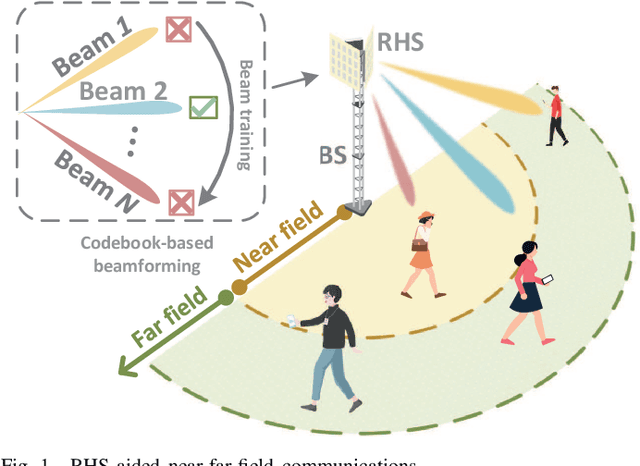
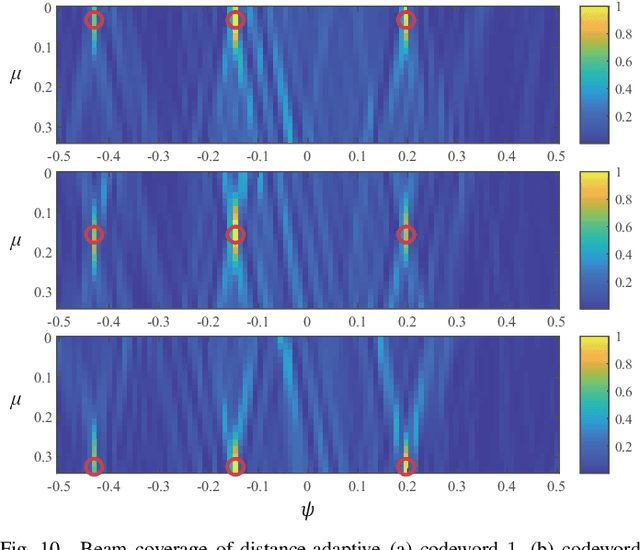
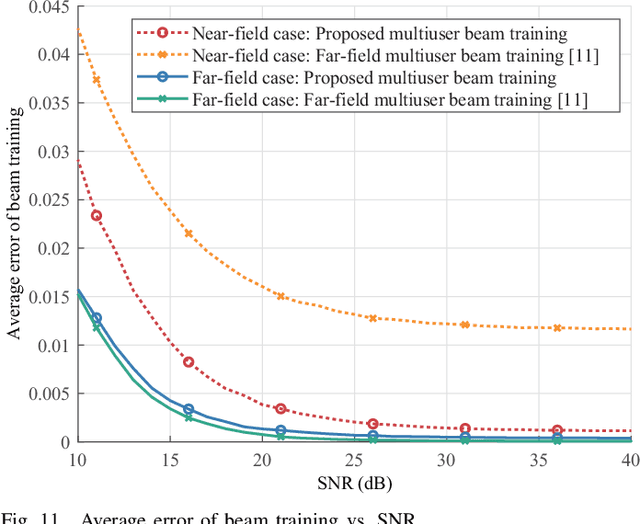
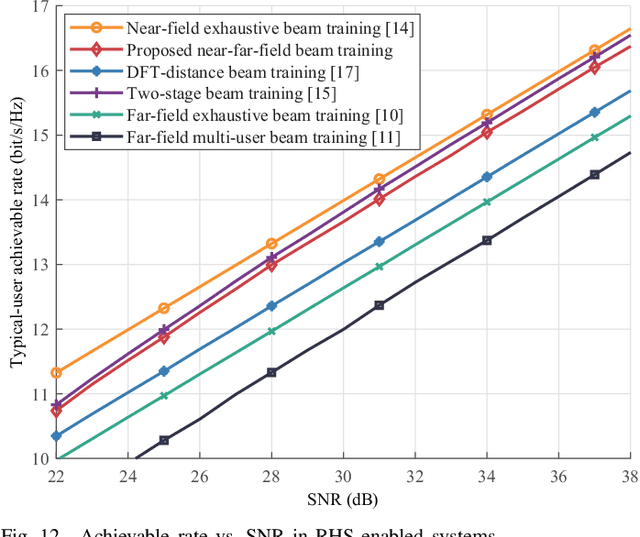
Abstract:Reconfigurable holographic surfaces (RHSs) have been suggested as an energy-efficient solution for extremely large-scale arrays. By controlling the amplitude of RHS elements, high-gain directional holographic patterns can be achieved. However, the complexity of acquiring real-time channel state information (CSI) for beamforming is exceedingly high, particularly in large-scale RHS-assisted communications, where users may distribute in the near-field region of RHS. This paper proposes a one-shot multi-user beam training scheme in large-scale RHS-assisted systems applicable to both near and far fields. The proposed beam training scheme comprises two phases: angle search and distance search, both conducted simultaneously for all users. For the angle search, an RHS angular codebook is designed based on holographic principles so that each codeword covers multiple angles in both near-field and far-field regions, enabling simultaneous angular search for all users. For the distance search, we construct the distance-adaptive codewords covering all candidate angles of users in a real-time way by leveraging the additivity of holographic patterns, which is different from the traditional phase array case. Simulation results demonstrate that the proposed scheme achieves higher system throughput compared to traditional beam training schemes. The beam training accuracy approaches the upper bound of exhaustive search at a significantly reduced overhead.
Near-Far Field Codebook Design for IOS-Aided Multi-User Communications
Jan 16, 2024



Abstract:Recently, the rapid development of metasurface facilitates the growth of extremely large-scale antenna arrays, making the ultra-massive MIMO possible. In this paper, we study the codebook design and beam training for an intelligent omni-surface (IOS) aided multi-user system, where the IOS is a novel metasurface enabling simultaneous signal reflection and refraction. To deal with the near field expansion caused by the large-dimension of IOS, we design a near-far field codebook to serve users both in the near and far fields without prior knowledge of user distribution. Moreover, to fully exploit the dual functionality of the IOS, the coupling between the reflective and refractive signals is analyzed theoretically and utilized in the codebook design, thereby reducing the training overhead. On this basis, the multi-user beam training is adopted where each codeword covers multiple areas to enable all users to be trained simultaneously. Simulation results verify our theoretical analysis on the reflective-refractive coupling. Compared to the state-of-the-art schemes, the proposed scheme can improve the sum rate and throughput.
Frequency Regularization: Restricting Information Redundancy of Convolutional Neural Networks
Apr 30, 2023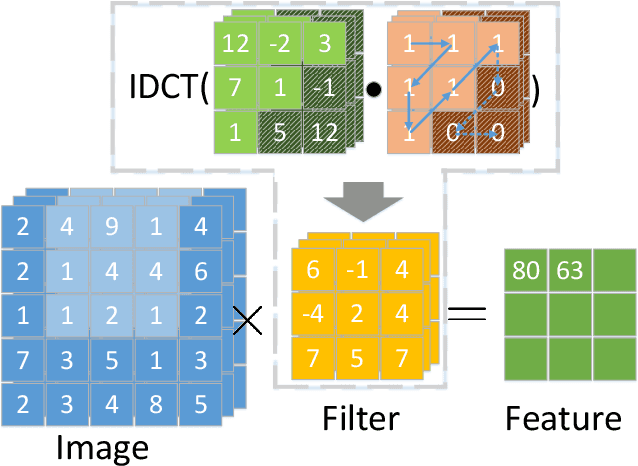

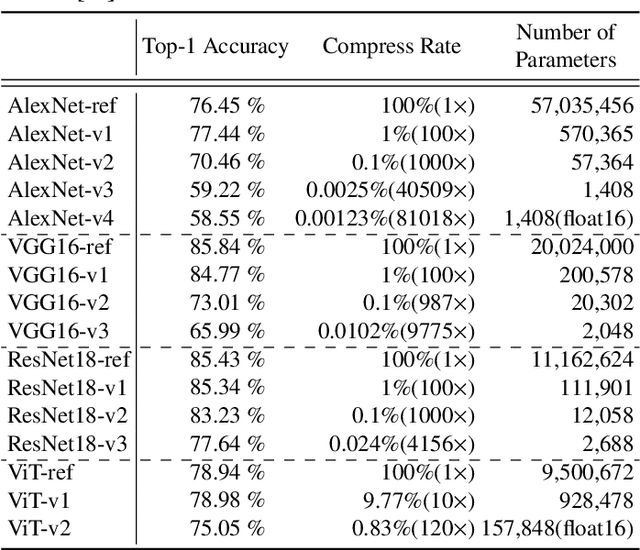
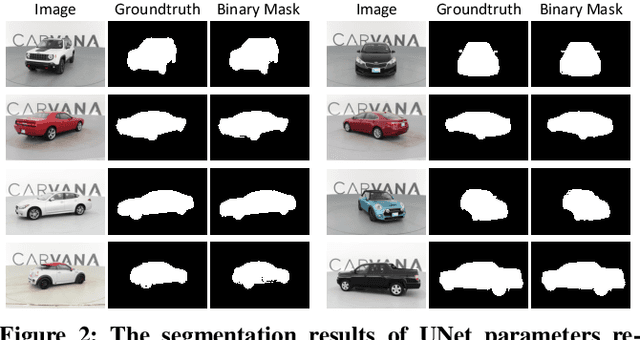
Abstract:Convolutional neural networks have demonstrated impressive results in many computer vision tasks. However, the increasing size of these networks raises concerns about the information overload resulting from the large number of network parameters. In this paper, we propose Frequency Regularization to restrict the non-zero elements of the network parameters in the frequency domain. The proposed approach operates at the tensor level, and can be applied to almost all network architectures. Specifically, the tensors of parameters are maintained in the frequency domain, where high frequency components can be eliminated by zigzag setting tensor elements to zero. Then, the inverse discrete cosine transform (IDCT) is used to reconstruct the spatial tensors for matrix operations during network training. Since high frequency components of images are known to be less critical, a large proportion of these parameters can be set to zero when networks are trained with the proposed frequency regularization. Comprehensive evaluations on various state-of-the-art network architectures, including LeNet, Alexnet, VGG, Resnet, ViT, UNet, GAN, and VAE, demonstrate the effectiveness of the proposed frequency regularization. For a very small accuracy decrease (less than 2\%), a LeNet5 with 0.4M parameters can be represented by only 776 float16 numbers (over 1100$\times$ reduction), and a UNet with 34M parameters can be represented by only 759 float16 numbers (over 80000$\times$ reduction). In particular, the original size of the UNet model is 366MB, we reduce it to 4.5kb.
 Add to Chrome
Add to Chrome Add to Firefox
Add to Firefox Add to Edge
Add to Edge